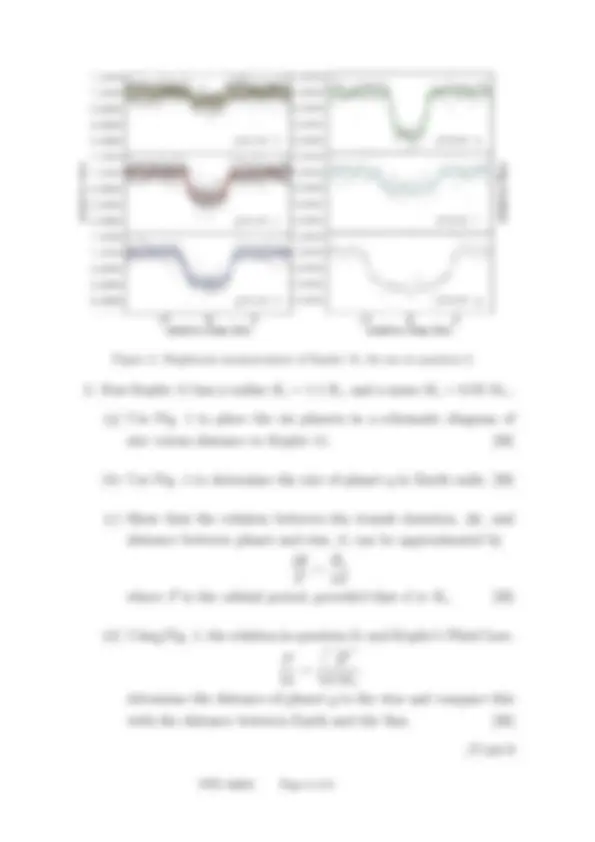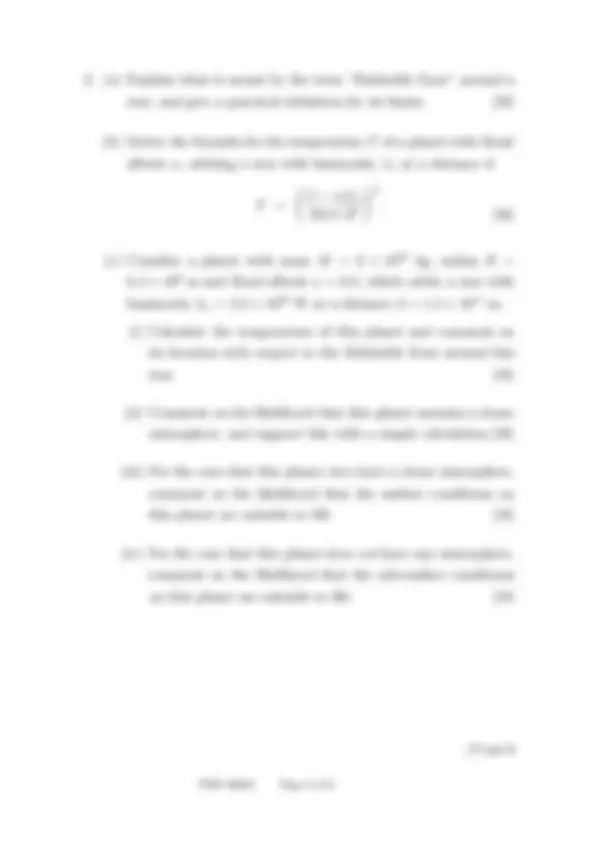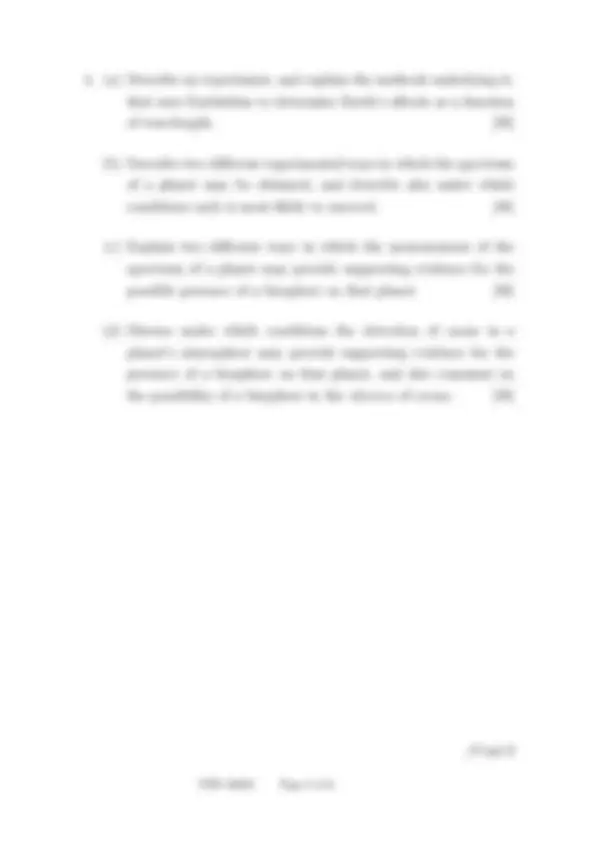





Study with the several resources on Docsity

Earn points by helping other students or get them with a premium plan


Prepare for your exams
Study with the several resources on Docsity

Earn points to download
Earn points by helping other students or get them with a premium plan
Community
Ask the community for help and clear up your study doubts
Discover the best universities in your country according to Docsity users
Free resources
Download our free guides on studying techniques, anxiety management strategies, and thesis advice from Docsity tutors
The examination questions for the physics and astronomy course, life in the universe, at keele university, academic year 2010/11. The exam covers topics such as the role of carbon in life, the properties of kepler 11 and its planets, the concept of the habitable zone, and various methods for determining planetary properties and the presence of a biosphere. Candidates are required to answer three questions.
Typology: Exams
Uploaded on 09/29/2011
1 / 6

This page cannot be seen from the preview
Don't miss anything!




Level III
Wednesday 27th^ April 2011, 16.00-18.
PHYSICS/ASTROPHYSICS
PHY-
LIFE IN THE UNIVERSE
Candidates should attempt to answer THREE questions.
(b) Give three different functions of carbon-based molecules in our bodies. [15]
(c) State the physical origin of the carbon atoms in our bodies.[10]
(d) Describe the mechanisms through which carbon atoms made it from their place of formation into our bodies. [40]
(e) Give two different essential roles that liquid water plays in the functioning of life on Earth. [20]
/Cont’d
(b) Derive the formula for the temperature T of a planet with Bond albedo a, orbiting a star with luminosity L⋆ at a distance d:
T =
(1^ −^ a)L⋆ 16 πσ d^2
(^14)
. (^) [30]
(c) Consider a planet with mass M = 6 × 1024 kg, radius R =
(ii) Comment on the likelihood that this planet sustains a dense atmosphere, and support this with a simple calculation.[20]
(iii) For the case that this planet does have a dense atmosphere, comment on the likelihood that the surface conditions on this planet are suitable to life. [10]
(iv) For the case that this planet does not have any atmosphere, comment on the likelihood that the sub-surface conditions on this planet are suitable to life. [10]
/Cont’d
(b) Describe two different experimental ways in which the spectrum of a planet may be obtained, and describe also under which conditions each is most likely to succeed. [40]
(c) Explain two different ways in which the measurement of the spectrum of a planet may provide supporting evidence for the possible presence of a biosphere on that planet. [20]
(d) Discuss under which conditions the detection of ozone in a planet’s atmosphere may provide supporting evidence for the presence of a biosphere on that planet, and also comment on the possibility of a biosphere in the absence of ozone. [20]
/Cont’d